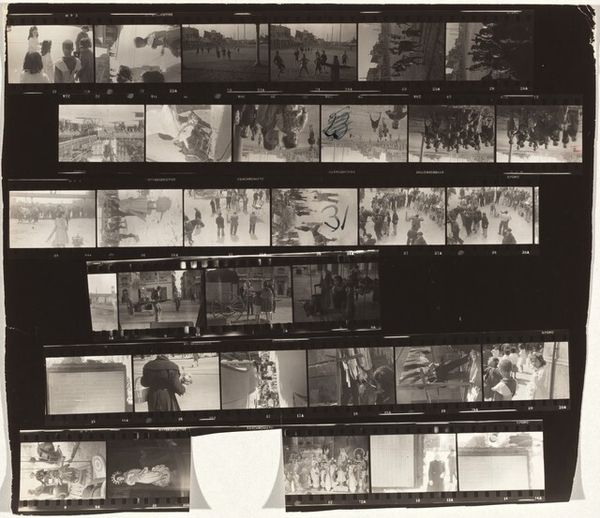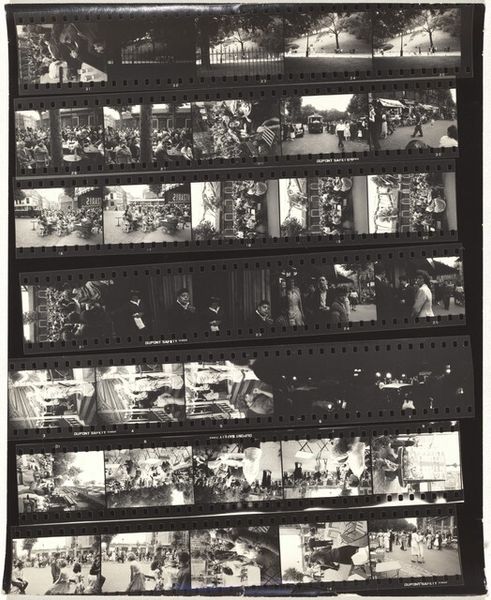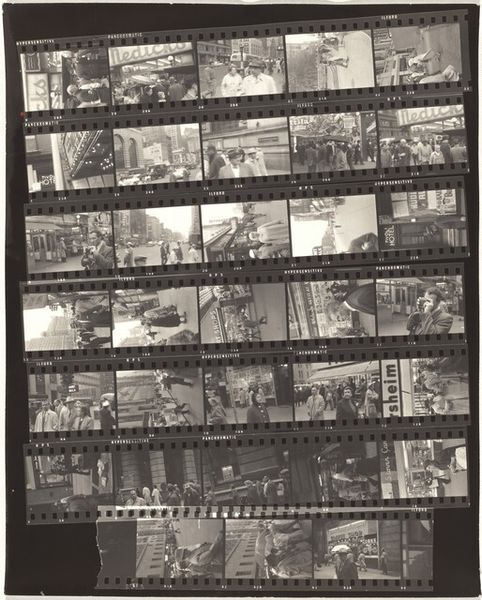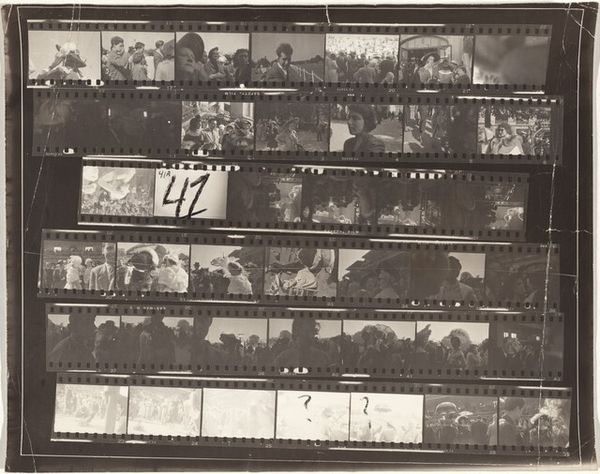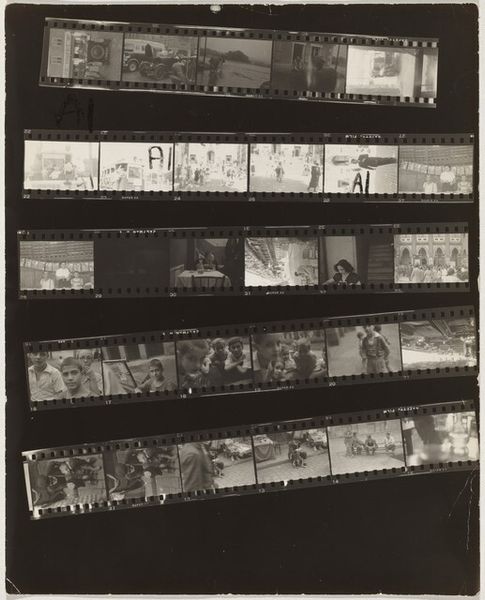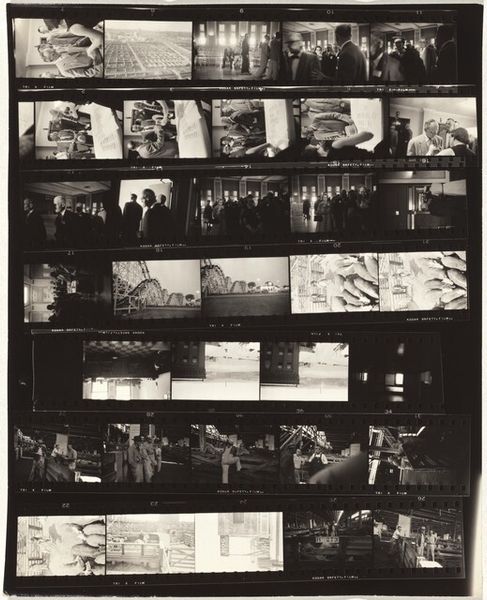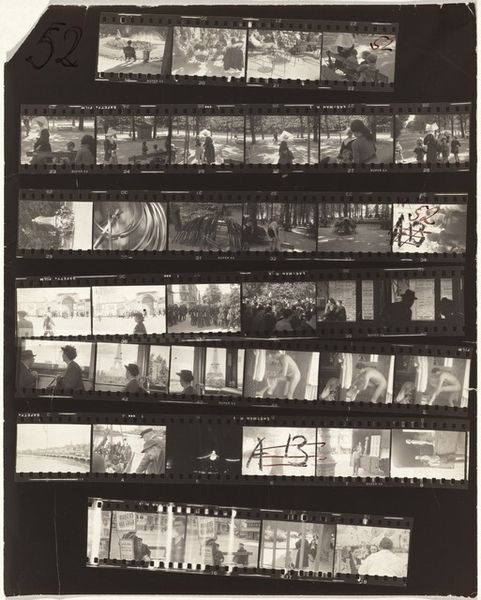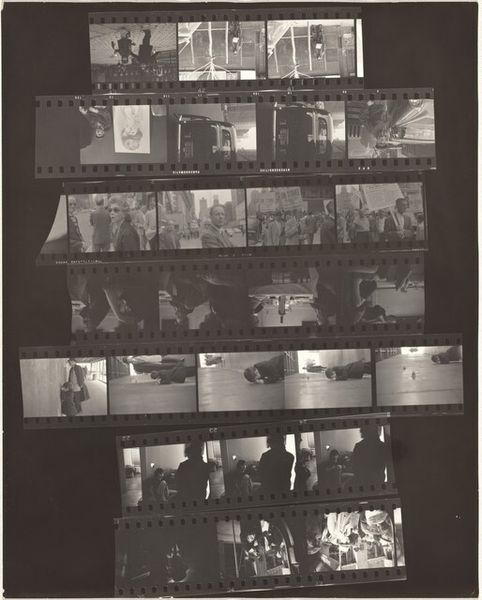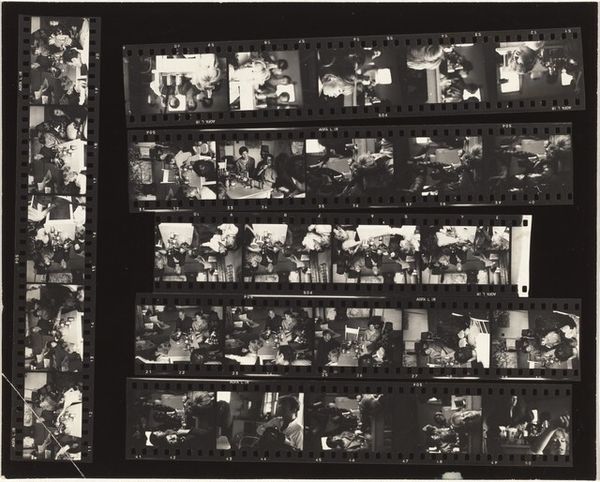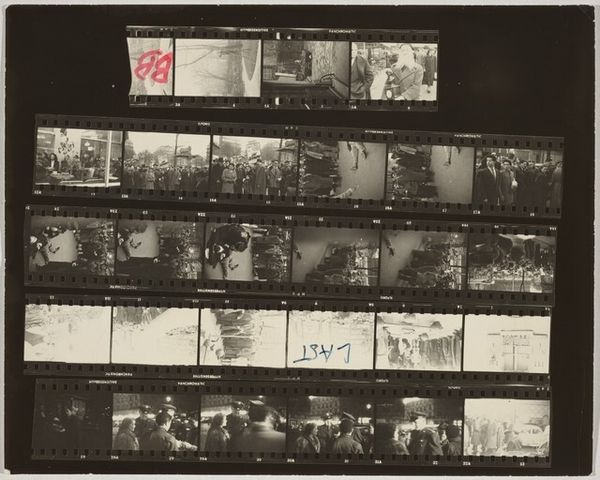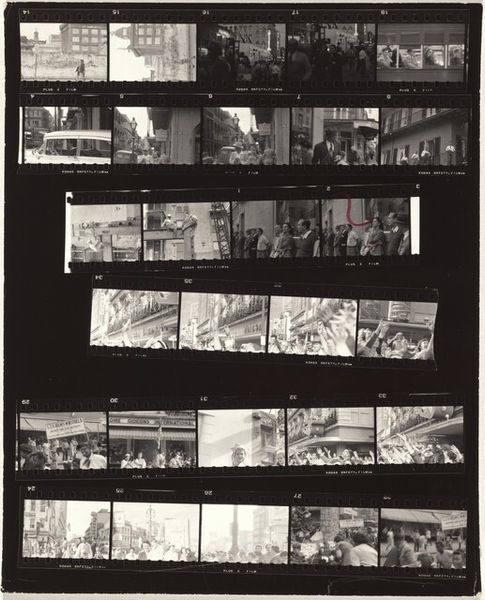
photography, gelatin-silver-print
#
film photography
#
landscape
#
archive photography
#
street-photography
#
photography
#
culture event photography
#
historical photography
#
gelatin-silver-print
Dimensions: overall: 23.9 x 29.9 cm (9 7/16 x 11 3/4 in.)
Copyright: National Gallery of Art: CC0 1.0
Curator: Robert Frank’s "Election day--Switzerland 2," created in 1949, is a captivating gelatin silver print we are looking at today. The composition is a series of strips of images from what seems to be an election. What's your first take on viewing this? Editor: There’s a real grittiness to this that strikes me immediately, especially as it depicts what one imagines to be a rather genteel Swiss election. The repetition of frames really gives me a sense of movement and, more importantly, labor. Curator: Indeed. The materiality here is significant. Consider the formal qualities of the contact sheet itself— the ordered arrangement of frames and varying perspectives creates a narrative sequence that engages the eye of the viewer. What can this say about post-war documentary approaches? Editor: It pushes against the traditional boundary between finished work and process. The film itself, the literal strips, become part of the aesthetic, right? This wasn’t necessarily about capturing perfect images; it was also about demonstrating the method of its production, echoing the mechanical and often repetitive work inherent to democratic participation. Curator: Precisely. The high contrast and sharp focus invite our attention to very specific details, a face here, the architectural detail of the building there. There’s an interesting contrast between those candid, raw portraits and more static images. Can you explore that? Editor: Sure. By incorporating the infrastructure of the election process - tables, posters, machinery - he is, maybe, making commentary about democracy as a hands-on social exercise rather than an abstract ideology. And those close shots almost emphasize the weight of their choices; it brings it back down to the individual and their civic engagement. Curator: What Frank is doing is taking advantage of what photography does uniquely well, which is indexing reality and freezing instants, elevating the banal. Editor: I think you are spot-on. Considering the context of its making helps us better grasp Frank’s visual decisions. That blending of procedure with the portraiture reveals something honest about people and community. It also challenges the consumption of art and what goes into constructing something seemingly ‘everyday.’ Curator: Thinking about Frank’s contact sheet in that way truly provides an alternative point of view of culture at mid-century. Editor: Absolutely. I find that recognizing this artist's engagement with procedure and material allows for a far more comprehensive read of Frank’s perspectives.
Comments
No comments
Be the first to comment and join the conversation on the ultimate creative platform.
